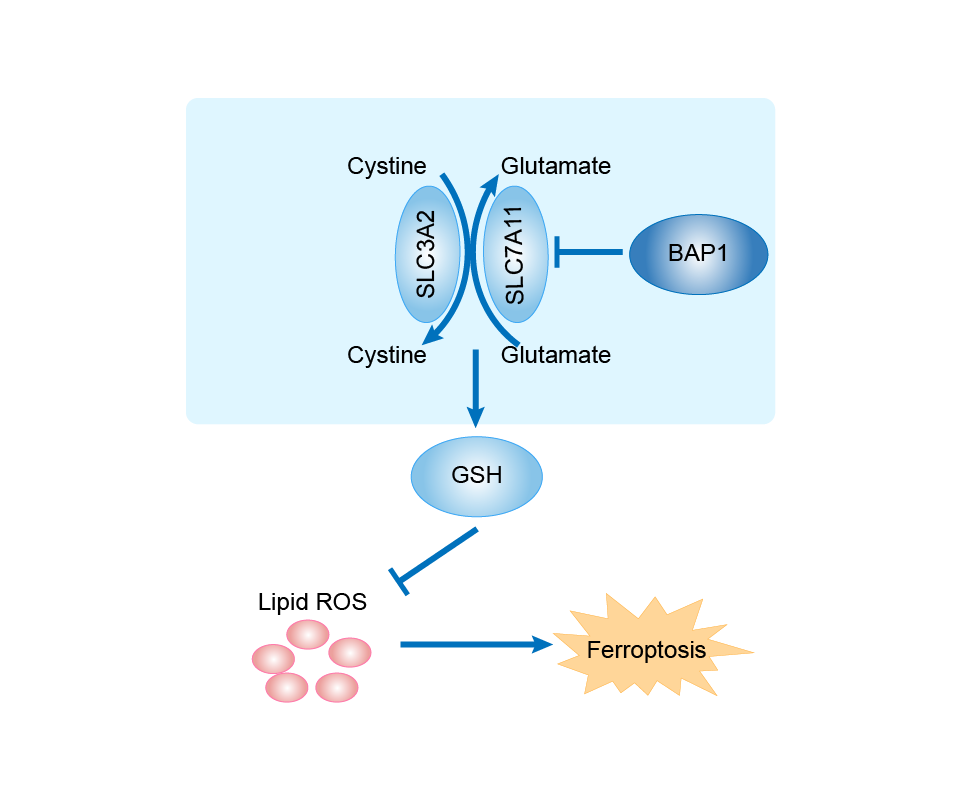Ferroptosis Target Information
General Information of the Ferroptosis Target (ID: TAR10014)
| Target Name | Ubiquitin carboxyl-terminal hydrolase BAP1 (BAP1) | ||||
|---|---|---|---|---|---|
| Synonyms |
BRCA1-associated protein 1 ; Cerebral protein 6
Click to Show/Hide
|
||||
| Gene Name | BAP1 | ||||
| Sequence |
MNKGWLELESDPGLFTLLVEDFGVKGVQVEEIYDLQSKCQGPVYGFIFLFKWIEERRSRR
KVSTLVDDTSVIDDDIVNNMFFAHQLIPNSCATHALLSVLLNCSSVDLGPTLSRMKDFTK GFSPESKGYAIGNAPELAKAHNSHARPEPRHLPEKQNGLSAVRTMEAFHFVSYVPITGRL FELDGLKVYPIDHGPWGEDEEWTDKARRVIMERIGLATAGEPYHDIRFNLMAVVPDRRIK YEARLHVLKVNRQTVLEALQQLIRVTQPELIQTHKSQESQLPEESKSASNKSPLVLEANR APAASEGNHTDGAEEAAGSCAQAPSHSPPNKPKLVVKPPGSSLNGVHPNPTPIVQRLPAF LDNHNYAKSPMQEEEDLAAGVGRSRVPVRPPQQYSDDEDDYEDDEEDDVQNTNSALRYKG KGTGKPGALSGSADGQLSVLQPNTINVLAEKLKESQKDLSIPLSIKTSSGAGSPAVAVPT HSQPSPTPSNESTDTASEIGSAFNSPLRSPIRSANPTRPSSPVTSHISKVLFGEDDSLLR VDCIRYNRAVRDLGPVISTGLLHLAEDGVLSPLALTEGGKGSSPSIRPIQGSQGSSSPVE KEVVEATDSREKTGMVRPGEPLSGEKYSPKELLALLKCVEAEIANYEACLKEEVEKRKKF KIDDQRRTHNYDEFICTFISMLAQEGMLANLVEQNISVRRRQGVSIGRLHKQRKPDRRKR SRPYKAKRQ Click to Show/Hide
|
||||
| Family | Peptidase C12 family | ||||
| Function |
Deubiquitinating enzyme that plays a key role in chromatin by mediating deubiquitination of histone H2A and HCFC1. Catalytic component of the PR-DUB complex, a complex that specifically mediates deubiquitination of histone H2A monoubiquitinated at 'Lys-119' (H2AK119ub1). Does not deubiquitinate monoubiquitinated histone H2B. Acts as a regulator of cell growth by mediating deubiquitination of HCFC1 N-terminal and C-terminal chains, with some specificity toward 'Lys-48'-linked polyubiquitin chains compared to 'Lys-63'-linked polyubiquitin chains . Deubiquitination of HCFC1 does not lead to increase stability of HCFC1 . Interferes with the BRCA1 and BARD1 heterodimer activity by inhibiting their ability to mediate ubiquitination and autoubiquitination. It however does not mediate deubiquitination of BRCA1 and BARD1. Able to mediate autodeubiquitination via intramolecular interactions to couteract monoubiquitination at the nuclear localization signal (NLS), thereby protecting it from cytoplasmic sequestration. Acts as a tumor suppressor.
Click to Show/Hide
|
||||
| Gene ID | 8314 | ||||
| Uniprot ID | |||||
| Target Type | Driver Suppressor Marker | ||||
| Mechanism Diagram | Click to View the Original Diagram | ||||

|
|||||
Tissue Relative Abundances of This Target
Full List of Regulator(s) of This Ferroptosis Target and Corresponding Disease/Drug Response(s)
BAP1 can be involved in and affect the ferroptosis by the following regulators, and result in corresponding disease/drug response(s). You can browse corresponding disease or drug response(s) resulting from the regulation of certain regulators.
Browse Regulator related Disease
NEAT1 (IncRNA)
Parkinson disease [ICD-11: 8A00]
| In total 1 item(s) under this disease | ||||
| Experiment 1 Reporting the Ferroptosis-centered Disease Response of This Regulator | [1] | |||
| Regulator for Ferroptosis | Driver | |||
| Pathway Response | Ferroptosis | hsa04216 | ||
| Cell Process | Cell ferroptosis | |||
In Vitro Model |
SK-N-SH cells | Neuroblastoma | Homo sapiens | CVCL_0531 |
| Response Description | Dysregulated ferroptosis is closely associated with Parkinson's disease (PD) progression. NEAT1 functioned as a sponge to suppress miR-150-5p expression. Moreover, miR-150-5p overexpression suppressed ferroptosis in PD cell model. And miR-150-5p regulated SLC7A11 expression by directly binding to BAP1. | |||
hsa-miR-150-5p (miRNA)
Parkinson disease [ICD-11: 8A00]
| In total 1 item(s) under this disease | ||||
| Experiment 1 Reporting the Ferroptosis-centered Disease Response of This Regulator | [1] | |||
| Regulator for Ferroptosis | Suppressor | |||
| Pathway Response | Ferroptosis | hsa04216 | ||
| Cell Process | Cell ferroptosis | |||
In Vitro Model |
SK-N-SH cells | Neuroblastoma | Homo sapiens | CVCL_0531 |
| Response Description | Dysregulated ferroptosis is closely associated with Parkinson's disease (PD) progression. NEAT1 functioned as a sponge to suppress miR-150-5p expression. Moreover, miR-150-5p overexpression suppressed ferroptosis in PD cell model. And miR-150-5p regulated SLC7A11 expression by directly binding to BAP1. | |||
